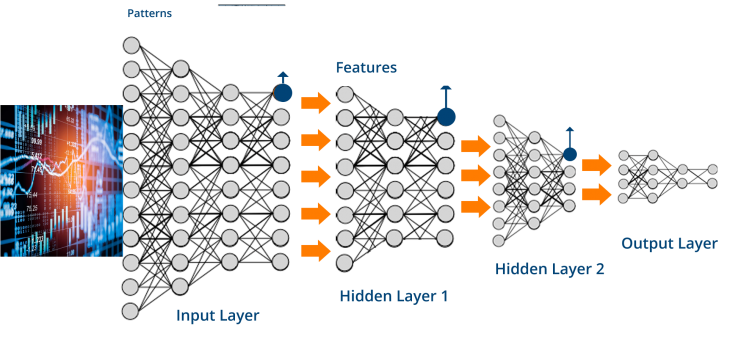Tensor Flow

TensorFlow is a popular open-source software library for dataflow and differentiable programming across a range of tasks. It is used for building machine learning and deep learning models for a variety of applications, including image and speech recognition, natural language processing, and predictive analytics.
Here are a few common applications of TensorFlow:
-
Image Classification: TensorFlow can be used to build and train deep learning models for image classification tasks, where an image is classified into one of many predefined categories.
-
Object Detection: TensorFlow can be used to build object detection models that can identify and locate objects in an image or video.
-
Speech Recognition: TensorFlow can be used to build models for speech recognition and transcription, converting spoken words into text.
-
Natural Language Processing (NLP): TensorFlow can be used to build NLP models for tasks such as text classification, sentiment analysis, machine translation, and named entity recognition.
-
Recommender Systems: TensorFlow can be used to build recommendation systems, where the model recommends items to users based on their past behavior or preferences.
These are just a few examples of the many applications of TensorFlow. The versatility and flexibility of TensorFlow make it a popular choice for building machine learning models for a wide range of tasks and industries.

Image Classification is a fundamental task that attempts to comprehend an entire image as a whole. The goal is to classify the image by assigning it to a specific label. Typically, Image Classification refers to images in which only one object appears and is analyzed. In contrast, object detection involves both classification and localization tasks, and is used to analyze more realistic cases in which multiple objects may exist in an image.

An object detection model can identify which of a known set of objects might be present and provide information about their positions within the image
Keras-Library
Keras is a high-level neural network API, written in Python and capable of running on top of TensorFlow. It was developed to make building, training, and evaluating deep learning models as simple and intuitive as possible.
Keras abstracts much of the complexity involved in building, training, and evaluating deep learning models, allowing developers to focus on the problem at hand and build models quickly. At the same time, Keras provides a high-level API that can be used to build and train complex neural network architectures.
TensorFlow, on the other hand, is a low-level library for building and training machine learning models. It provides a comprehensive set of tools and APIs for building, training, and deploying machine learning models, but can be challenging to work with directly.
By using Keras on top of TensorFlow, developers can take advantage of the best of both worlds. They can build and train complex neural networks using the high-level API provided by Keras, while still having access to the low-level capabilities of TensorFlow when needed.
In conclusion, Keras is a popular and user-friendly deep learning library that runs on top of TensorFlow, and provides a high-level API for building, training, and evaluating neural networks.





